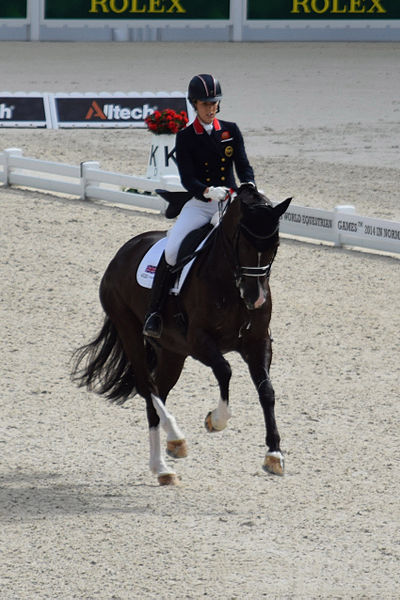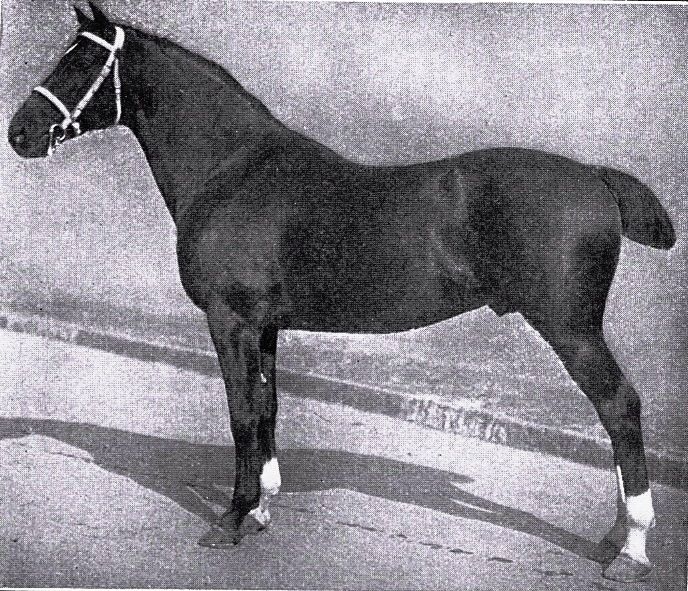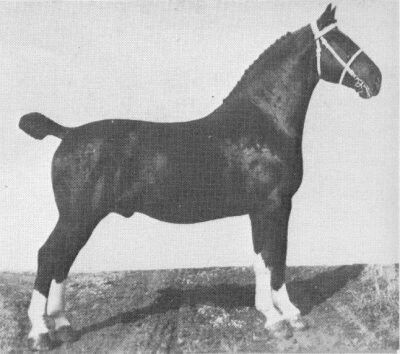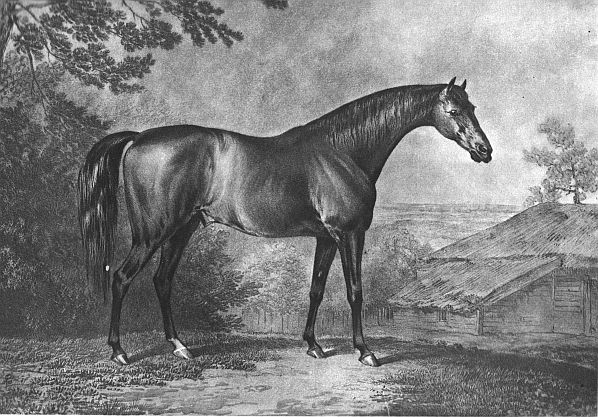Valegro - Pedigree Analysis
Introduction
This analysis of the great modern dressage star Valegro DU (Dutch Warmblood) was suggested by Paula McRae. Paula reported that Valegro DU is considered the best horse ever by many, he is a dressage phenomenon.

[Charlotte Dujardin on Valegro, photo taken on 3/7/2013 by Florence Skowron and made available for public use via Wiki Commons]
Paula also raised a good point in my last analysis I posted on facebook (Verdades), that this type of lineage review is too complex or technical for beginners. She is right, it can be too detailed but that is the nature of it, because we are using the pedigree as a genetic road map: a tool to help us improve our breeding results, complexity is unavoidable. It takes time and study to master the principles needed to use this tool efficiently, but as with every other discipline we can begin simply. Ask yourself, did you start off as a perfect rider? No, of course not! Some of you might have begun riding with a natural ability that most of us don't have (that lack of natural talent includes me) and so were able to progress much more quickly and easily up the levels and ultimately get to a higher level than the rest of us common enthusiasts. But no matter your natural ability you had to begin with basics and graduate to finer expressions. With pedigree analysis start with small steps, focus on the portion you understand and in learning the bloodlines, before too long you will find it easier and easier. My website has basic outlines of the principles (Tesio Methods) and my first book has step by step instruction with ample examples to assist you. Please don't be discouraged by the complexity, it is posted on facebook so you will be able to ask questions or make comments. I am also providing links to revelant articles throughout this text that may help your comprehension.
In the research phase of this work I came upon a common problem: sloppy breed labels. In this case it was most often the Selle Francais breed thrown on Anglo-Norman (aka Demi-Sang or French Coach Horse) and the French Trotter horses. The Selle Francais did not become a breed until 1958, so any horse born before that date can not be a Selle Francais...it is some other breed. You may wonder why I am bothering with this. I wish I did not have to actually, but if a breed is not identified correctly you will be misled on the sources of the talent, and of course the true breeders and breeds that supplied the resource will be robbed of their credit as well. For example, in this case right at the get-go in building out the sire line of Furioso II, I found his dam was usually labeled on most online databases as a Selle Francais and all of her ancestors--even those born 100 years before the breed existed, but she is actually a Anglo-Norman (aka French Coach or Demi-Sang). Allbreeddatabase.com and Horsetelex.com had the false breed labels. Happily, I found the correct breed assigments on sporthorse-data.com. (This service is no longer free, you must sign up to use it).
In the research of this horse I extended the bloodlines to their end...all the way, so that I would know exactly what breeds made up this horse. Be aware my own database is loaded with incorrect breed labels as well that I have to purge and redo because I have entered horses long before I was able to recognize a breed assignment was not correct because of the date of birth of the horse. Like you I trusted the online sources to be accurate---this problem is industry wide, and without realizing it we perpetuate the errors. For an illustration of passing on errors, my latest book (Standardbred Sport Horses) has a section on the great Selle Francais stallion Galoubet A, and it was only in the latest round of proofs reviews that I noticed I had wrong breed labels on many of his ancestors.

[French Coach Horse, aka Demi-Sang or Anglo-Norman, a major contributing breed to the later Selle Francas. (image from Judging Farm Animals, Plumb, 1919)]
Paula, who suggested this analysis, is a breeder of warmblood dressage horses (McArthur Warmblood Stud, NSW in Australia) and she told me that Valegro DU is the greatest dressage horse there has ever been, and that he never made mistakes, and that conventional discussions can't explain his talent. My breeding focus is not dressage, nor do I follow the warmbloods breeds like I used to, instead I have turned my attention to American breeds and our own American Sport Horse, but I agreed to explore his lineage because at my stage of bloodline study I am interested in the root sources of sport talent (see Dressage page, Donnerhall, Verdades, Loretto HO for examples) and here is a perfect example to research and note. I believe after this study I may have amassed enough background data to make some conclusions in a future article. Valegro's background doesn't contradict my previous findings, because in his lineage the base sources are found to originate in the Anglo breeds, more on this below.
Analysis
Valegro, a registered Dutch Warmblood (DU) gelding, has amassed the highest rating ever in a dressage horse...he has scored consistently in the 90%, a sustained performance level unheard of until he danced onto the stage and stunned all with his perfection.
For those of you who want the simple version: Valegro DU is strongly linebred 5x4 to the Selle Francais full brothers Furioso II and Mexico, 6x6 to the 3/4 Gelderland brothers Hydroland-Viking and carries a sex-balanced double of the Holstein Farn 4x5. Furioso II-Mexico are by sons and Hydroland-Viking by daughters providing a mild remote sex balance. The entire pedigree however is male leaning, therefore the male performance horses bred like this will be better than the daughters. Full and 3/4 siblings are powerful builders of dominance; therefore the greatest genetic power in this horse arrives via the full brothers. The many different breeds found in this horse may appear to be outcrosses but as I have mentioned all have common lines in the background.
There is much more to be learned here, but be warned it will become complex. Most of you are probably looking for the "magic bullet", that is the sire that will turn your foal into the star performer. Unfortunately in the real world those sires are few, and in warmblood and sport horse breeding they are even rarer because we are dealing with a mix of breeds so that dominance is usually dissipated with each cross. Happily however, potency is not always lost and this dressage superstar is an example of what combining the right sire with the dam can do for you.
Let's see first what talent the bloodlines demonstrate. Negro DU, the sire, is a good but really moderate stallion; until Valegro DU came on the scene his breeding index of 149 was rated good but certainly not great or so said the writers of the time--he was described as a 'respectable' sire. Now he is rated 155 and lauded as better than Jazz--whatever that means. This is the European system talking however, and we look at genetics differently--through the pedigree.
Negro DU was a very good, but once again not a great performer, It is notable that his sire Ferro DU was a star, earning team silver, and while he was obviously very talented he was criticized as being 'hot' and 'difficult'. It is not that unusual to find high strung horses in the top of competition and it indicates to me he had some supercharged genes. Ferro DU was a versatile producer of both dressage and jumping stock and is considered a reliable bloodline for excellent performers, especially his grandchildren as once again his critics feel his direct offspring are too hot. Negro's dam, Fewrie DU was an excellent broodmare, producing 5 Grand Prix horses--so she carried top rate sport genetics also. This information gives me clues on the genetic power being transmitted. It appears that that there is a high level of talent coming from both sides, but it was not enhanced very well or Negro's own progeny record would be better. He had some good upper level performers, some have made it to Grand Prix level but Negro's only superstar in over 1000 foals was Valegro DU. There is significant talent there but the combination did not increase it. Valegro DU far exceeds his sire in quality.
On Valegro's dam side we get a good mare, but with only one foal listed, and the dam-sire Gershwin DU was a noted good dressage horse, sired by a top jumper: Voltaire DU. So again it appears the dam's genetics are very good but not great, yet her one foal, Valegro DU, was as good as it ever gets in performance...therefore we know something exceptional happened when these two gene pools came together. Valegro DU is a far better horse than his sire or dam. This is something we want to understand, because it shows us that we can improve a gene pool by careful selection.
I am going to provide both sire and dam lineages separately so you can see what they are strong in individually, and then we will go back to the combined pedigree in Valegro DU to see what interacted. It is possible to go into the bloodlines much more deeply than I will present here, but I am making an effort to keep this as streamlined as possible. I will also note for you what breeds supply the base of each modern example...which is important information needed for our overall understanding of where sport comes from.
Looking at Negro's pedigree we can see plainly that his dam provided the strongest linebreeding with Amor HO 5x4 and Centurio GEL 5x4 (we read duplications from top to bottom) and there are further back duplications as well (Foudroyant 6x7, Helmar GEL 6x6, Graaf van Wittenstein GEL 7x7). I want to keep this straight forward and so will concentrate on the most dominant line. On the surface Amor HO and Centurio GEL appear equal in genetic strength because they occupy the same generation position, and provided what we call a remote sex-balance as one is by sons and the other by daughters only. But not all bloodlines are equal, some are more potent than others, and if we find in addition an ancestor of a bloodline is duplicated this makes the front line stronger. This design is what we see in Centurio GEL with his sire L'invasion AN duplicated. It turns out this sire line is even more important than we see in the 7 generations as overall there are 9 lines of Linvasion AN present in 10 generations. But that is not all, for L'invasion's influence encompasses the entire lineage because there are 3 more lines of him on the dam side, making 12 lines in 10 generations altogether. So Centurio GEL and L'invasion AN are the main genetic powers in Negro DU.
Amor HO is of less genetic weight not just because of less reinforcement of his immediate ancestors but because he is a cross-breed, with little connecting genetically between his sire and dam, therefore the genes supplied by the sire and dam are halved in the offspring. Amor's Holstein dam is well linebred however, and she provides reinforcement to the Farn HO bloodlines making Farn's influence stronger. Further, the Holstein breed itself, especially up to the era right before Amor HO, was extremely powerful in type. It was noted for its reliable stamp, mainly used in jumping; in more modern time other breeds have been brought in to make it more versatile with mixed results. What I found interesting is virtually every bloodline of the original Holstein originated either with Thoroughbred or Yorkshire Coach Horse, and even more remarkable most lines go back multiple times to a single stallion: the Yorkshire Coach Horse Burlington Turk. For instance, the modern foundation sire of the Holstein Achill HO 1877 is inbred 7 times to him in 7 generations--he is a genetic bomb of Burlington Turk. When you look at Burlington Turk's pedigree you see his sire is a TB and his dam is a Yorkshire with Cleveland and Norfolk blood--these are trotter breeds.

[Above is Domburg GEL 1916, a bloodline found consistently in the Dutch Warmblood, his strongest dominance, like Farn HO, is Achill HO (Burlington Turk YC 7 lines) and Emigrant OL who is 3/4 TB.]
Anglo-Norman is the precursor to the Selle Francais, a coach horse breed made up of Norman Draft, Thoroughbred, Norfolk Trotter and Yorkshire Coach. Gelderland is a farm-carriage breed made up of largely Oldenburg, Thoroughbred, Anglo-Norman and East Prussian. The Oldenburg goes quickly back to the Mecklenburg stock (as does the Hanoverian) which is largely Thoroughbred, Norfolk Trotter, Yorkshire-Cleveland. Can you see a similarity yet in these 'different' breeds?
Now take a look at Maifleur's lineage because we find a surprising common design to what we found in Negro DU. We see Vilmorin 6x5, Son-in-Law 6x7, L'invasion AN 7x7, Vas-y-Donc AN 7x7 and then the full brothers Fairway and Colorado are 7x6x6x7, At first I didn't see it, but Vilmorin, a very potent Thoroughbred has Fairway as a dam-sire, so this is a similar pattern to that found in Centurio-Linvasion in the sire. Further, there are 7 lines of those full brothers throughout the pedigree, plus there are 8 lines of their sire Phalaris. Full siblings are an extremely powerful genetic design statistically, creating tremendous amounts of common genes--this is genetic power. So once again we see this mare, like the sire is dominated by a certain genetic type; a strong Thoroughbred leaning but with trotter as well.
So in Valegro DU we have a sire and dam that have some genetic power to set type and performance from those dominances--a good design, solid, but not spectacular. Then they came together. What do you see?
Mexico SF and Furioso II SF are full brothers and they are 5x4, plus Farn HO 4x5, and the 3/4 brothers Hydroland-Viking. Farn HO is most dominant in Favorit/First who are by Tobias HO, a son of Achill HO 1877, a major root of the Holstein, and they are mainly Yorkshire Coach Horse, and as I mentioned above with the deep root Yorkshire Burlington Turk behind almost every line. Hydroland-Viking GEL are largely Anglo-Norman/French Trotter, plus Yorkshire, Norfolk Trotters, with many similar lines to those found in the Verdades DU lineage.
The performance history of Ferro DU pointed to high level talent coming from this line, and that is descended from Mexico SF and Farn HO, and that was the power that was reactivated and brought to Valegro DU via combination with his dam's genetics.

[The Thoroughbred Highflyer 1774, a horse found in critical mass in most dressage horses; look at that dressage hip angle.]
The background strength each parent gave are still providing depth, but now the dynamic is something different,and the leading dominance is Mexico-Furioso II. But is it really different? These brothers are mainly Thoroughbred-Anglo Norman, breeds that the entire pedigree is loaded with. The Thoroughbred Furioso, the sire of the full brothers, is considered a great jumper sire, and genetically he carries a tremendous amount of major root jump lines in 10 generations: 17 lines of Birdcatcher, 7 of Clemence, 5 of Thormanby and 5 of The Heir of Linne. But I am looking for dressage ability so in curiosity I extended Furioso's lineage to 14 generations and discovered he was dramatically saturated (critical mass) in the blood of Eclipse (697 lines) and Highflyer (842 lines). Highflyer was the dominance I found powering the Hanoverian dressage line of Duellant for instance.
Valegro's dam provides powerful trotter lines in Bordeaux FT 6x5x6 and Karikal AN 5x6, breeds that came from Thoroughbred, Norfolk Trotter, Yorkshire Coach, Norman Draft and even some American Trotter.
The common sire Roland GEL of the 3/4 brothers Hydroland/Viking as you can see is a son of the ever present L'invasion AN out of a Gelderland who is inbred to Domburg GEL, a line found in strength in Verdades as well. You can see plainly in Hydroland how quickly the bloodlines fade into Anglo-Norman and Oldenburg (look at the 7th generation).
Let's talk about L'invasion AN, because he is a background power of significance here and is found consistently in many top performance horses. He is heavily French Trotter with some Thoroughbred with notable duplications of Lassigny AN 4x5, Fuschia FT 4x6, Conquerant FT 6x7, Lavater FT 6x6, Cherbourg FT 6x7. The French Trotter, a true sport breed, began in the mid-1800s and its foundation lines all seem to arise from the Thoroughbred The Heir of Linne (1853) and the Norfolk Trotter mare La Juggler (1838). I noticed something interesting as well, his sire Pre Sale's dam, Idee Noire FT, is found also on the dam-line of Galoubet A SF, and her second dam Thais is a full Standardbred. Other American lines are found in Fuschia FT (Lady Pierce AT), Lassigny FT (Miss Bell AT) and in Bordeaux FT (Shepherd F. Knapp AT). I point this out, not just because this mare, Idee Noire FT, is obviously an important mare (found in lasting SF sport lines of significance) but because lines of American Standardbred, and actually all trotter breeds, are not allowed crosses in any warmblood breeds except the Selle Francais and the Dutch Warmblood, and the trotter breeds are certainly not covered in the 'world rankings'.
All that aside, besides identifying specific powerlines that consistently produce top sport (Furioso II/Mexico, Farn, Centurio, L'invasion etc.) that power the best horse ever Valegro DU, it has become clear to me the roots of sport ability always go right back to the Thoroughbred and Trotter--no matter the breed label, the sport talent arises with the Thoroughbred-Trotter.
Paula asked me to check to see which lines are common to Verdades and Valegro. It is quite remarkable that two such spectacular dressage horses have appeared from the same breed at one time. The lines coming from the Gelderland portion are exactly the same once they are extended, going to the same roots such as Landessohn OL, Kimme OL, Achill HO, Young Othello OL, Norman AN, Rubico OL and especially Emigrant OL. These are the same lines behind Donnerhall as well. I will discuss these and other root lines in a future article, as I have said now many times the sport source gene pool is actually very narrow--it always goes back to the Anglo breeds: Thoroughbred, Norfolk Trotter, Yorkshire-Cleveland, Irish Hunter, American Trotter-Standardbred. If you pull up these pedigrees you will see the progression, the Oldenburg and Holstein always go back to an Anglo origin, Thoroughbred, Cleveland (Yorkshire), Norfolk etc.
[For those of you unfamiliar with previous studies I have done, I discovered that contrary to the universal European claim of hundreds of years of carefully inspecting stock I found the opposite was true--the native European breed lines are generally unrecorded by the mid or late 1800s--and only the Anglo breeds are listed. It appears that until the Thoroughbred, Norfolk, Yorkshire etc. arrived no one even noted the name of their stock--which means of course it was not inspected either.]
What was different between Valegro and Verdades was the emphasis, with much the same background breeds and many common lines, Valegro's lines made the Thoroughbred/Yorkshire the more dominant and the power behind Verdades' lines came more from the Thoroughbred/Norfolk. We see this dominance of type reflected in their movement, Verdades moves like a carriage horse and Valegro moves like a coach horse---both are a delight to see.
The dutch lines in this star are often from the sister breeds: Groninger and Gelderland, and you may read more about those breeds on this line: Groninger Horse.